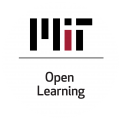
Learn how a nuclear reactor works, what the future of nuclear fusion looks like, and the numerous useful applications of nuclear radiation in four easy-to-follow modules, complemented with a chance to explore background radiation in your backyard.
About this self-paced course:
Nuclear Energy: Science, Systems and Society offers an introduction to the basic physics of nuclear energy and radiation, with an emphasis on the unique attributes and challenges of nuclear energy as a low-carbon solution. Peaceful applications of radiation to help humankind, such as reactors for materials science research, nuclear medicine, security initiatives and quantum technology, will be introduced.
The course will explore fission energy, establishing the scientific, engineering, and economic basis for fission reactors, and will describe the state of the art in nuclear reactor technology.
We will also learn about magnetic fusion energy research, with lectures covering the scientific and engineering basis of tokamaks, the state of the art in world fusion experiments, and the MIT vision for high-magnetic field fusion reactor.
In addition, the course also includes an optional hands-on section using guided exercises available on-line.
As a preview, please enjoy this virtual tour of the MIT Reactor!





